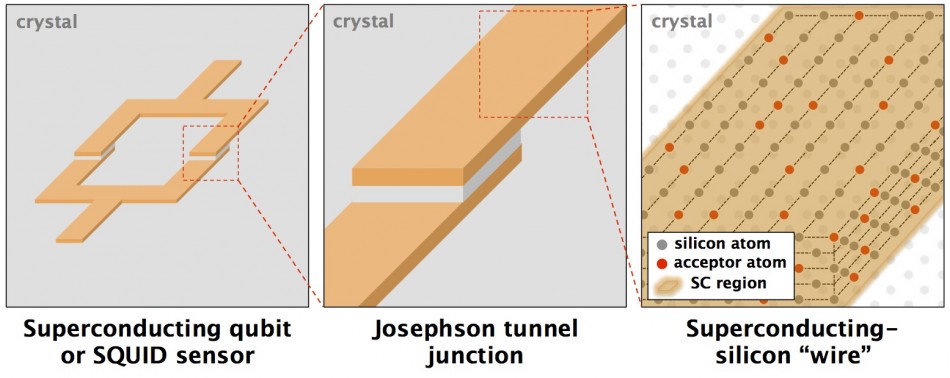Superconducting circuits are exceptionally flexible, enabling many different devices from sensors to quantum computers. Separately, epitaxial semiconductor devices such as spin qubits in silicon offer more limited device variation but extraordinary quantum properties for a solid-state system. It might be possible to merge the two approaches, making single-crystal superconducting devices out of a semiconductor by utilizing the latest atomistic fabrication techniques. Here we propose superconducting devices made from precision hole-doped regions within a silicon (or germanium) single crystal. We analyze the properties of this superconducting semiconductor and show that practical superconducting wires, Josephson tunnel junctions or weak links, superconducting quantum interference devices (SQUIDs), and qubits are feasible. This work motivates the pursuit of “bottom-up” superconductivity for improved or fundamentally different technology and physics.

Examples of superconducting-silicon quantum devices. (left) A superconducting loop interrupted at two points by junctions can form a superconducting flux qubit or a superconducting quantum interference device, or SQUID. Currents flowing in the loop can be used to measure the strength of a magnetic field threading the loop. The currents (flowing in either direction) can also be used to constitute a qubit. (middle) Separating the superconducting wires by an insulator, in this case pure, crystalline silicon, forms a Josephson junction. (right) Precisely placed, highly doped regions within the semiconductor form the superconducting wires.